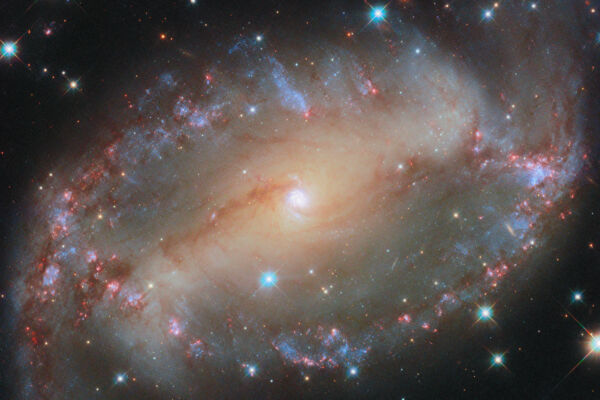The National Aeronautics and Space Administration (NASA)’s Hubble Space Telescope captured images of the spiral galaxy NGC 2566. From Earth’s perspective, this galaxy appears to resemble an eye in the universe.
NGC 2566 is located in Puppis, approximately 76 million light-years away from Earth. The central region of the galaxy features a prominent short bar structure formed by clustered stars, with spiral arms extending from both ends of the short bar.
Due to the tilt of NGC 2566 from our viewpoint, its disc takes on an almond shape, resembling the eye of the cosmos.
As NGC 2566 gazes upon us, astronomers are using the Hubble Space Telescope to observe it and investigate its star clusters and star-forming regions.
The data from the Hubble Space Telescope is particularly valuable for studying young stars with only a few million years of history. These stars are very bright in ultraviolet and visible light, wavelengths to which the telescope is highly sensitive.
By utilizing this data, researchers can measure the age of stars in NGC 2566, aiding in exploring the timeline of star formation in the galaxy and the exchange of gases between the clouds that can form stars and the stars themselves.
Astronomers have previously observed NGC 2566 using other telescopes, including NASA’s James Webb Space Telescope. Data from this telescope complements the image captured by the Hubble Space Telescope of NGC 2566, adding warmth and glowing dust to it.
Astronomers have also used the Atacama Large Millimeter/submillimeter Array (ALMA) in Chile to observe NGC 2566 at the long wavelength end of the electromagnetic spectrum. ALMA, with its array of 66 radio telescopes working together, can capture detailed images of the clouds that can form stars.
Through the collaboration of the Hubble Space Telescope, Webb Space Telescope, and ALMA, astronomers can gain insight into the formation, life, and death of stars within galaxies across the universe.
Additionally, on December 12, NASA released another image captured by the Hubble Space Telescope of the spiral galaxy UGC 10043.
As observed from Earth’s viewpoint, UGC 10043 is positioned sideways, facing away from us, hence we cannot see its spiral arms. Unlike other common spiral galaxies that face Earth directly, UGC 10043 appears exceptionally rare.
UGC 10043 is located in the Serpens constellation approximately 150 million light-years away. Its side view makes the galaxy’s disc resemble a sharp line cutting through space.

